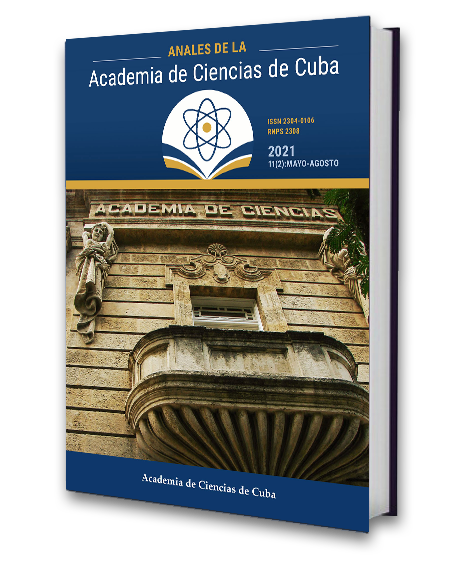Culicides diversity and entomo-epidemiological risk with emphasis in arbovirosis and malaria in Havana, Cuba
Keywords:
mosquitoes, Culex coronator, zoonotic diseases, entomology, CubaAbstract
Introduction: The identification of mosquito species is one of the main activities of the Aedes aegypti (L) and Aedes albopictus (S) surveillance and control program. Objective: to update knowledge on the mosquitoes diversity and entomo-epidemiological risk with emphasis in arbovirosis and malaria in Havana, Cuba.Methods: Entomology laboratory databases on the identification of mosquito species in Havana from 2000 to 2018 were used.
Results: The presence of a new species for Cuba is recorded: Culex (C) coronator. It was identified in four municipalities in different breeding sites associated with Culex nigripalpus and Anopheles albimanus. Cx. coronator is considered a potential vector of arbovirosis as it has been found to be naturally infected with various encephalitis and West Nile virus. The diversity of culicids was 49, representing 70 % of the total species (70) present in Cuba. Five of the six species of the genus Anopheles reported for Cuba were identified. An. albimanus main vector of malaria was recorded in all municipalities throughout the year; its presence is noteworthy in 21 artificial deposits in the yards and cement pots associated with construction sites. For the first time an entomological risk stratification of malaria for Havana is proposed. Conclusions. Entomo-epidemiological risk present in the province studied stands out because of the presence of 11 vector species of arbovirosis, malaria and zoonotic diseases.
Downloads
Downloads
Published
How to Cite
Issue
Section
License
The journal Anales de la Academia de Ciencias de Cuba protects copyright, and operates with a Creative Commons License 4.0 (Creative Commons Attribution-NonCommercial License 4.0). By publishing in it, authors allow themselves to copy, reproduce, distribute, publicly communicate their work and generate derivative works, as long as the original author is cited and acknowledged. They do not allow, however, the use of the original work for commercial or lucrative purposes.
The authors authorize the publication of their writings, retaining the authorship rights, and assigning and transferring to the magazine all the rights protected by the intellectual property laws that govern in Cuba, which imply editing to disseminate the work.
Authors may establish additional agreements for the non-exclusive distribution of the version of the work published in the journal (for example, placing it in an institutional repository or publishing it in a book), with recognition of having been first published in this journal.
To learn more, see https://creativecommons.org






